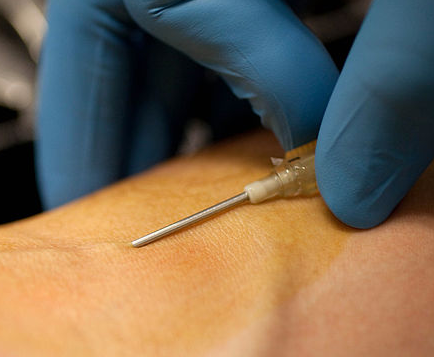Anemia in RA May Predict Joint Damage Over Time
Iron-deficiency anemia appears to be a good indicator of rapid progression of erosive rheumatoid arthritis not seen using standard disease activity measures.
Mller B, Scherer A, Frger F et al, Anaemia may add information to standardised disease activity assessment to predict radiographic damage in rheumatoid arthritis: a prospective cohort study. Ann Rheum Dis. (2013) Mar 16. [Epub ahead of print]
Iron-deficiency anemia in rheumatoid arthritis is often neglected in clinical practice, but an observational study by Swiss researchers suggests that it may be a good indicator of rapid progression of erosive disease not seen using standard disease activity measures.

The study analyzed information on RA patients collected by the Swiss clinical quality management (SCQM) database between 1996 and 2007, looking at anemia prevalence in relation to disease activity, medication use, and radiographic progression data from 2,681 patients followed for a mean of 2.2 years.
Anemia was generally defined according to World Health Organization criteria – a lower hemoglobin limit of 12 g/dl in women and 13 g/dl in men.
Anemia occurred with similar frequency among men and women, with a prevalence of 24% before 2001 and 14.7% by 2007. Just over 20% of the 4,377 patients in the database were men.
Anemia in RA is prototypical of “anemia of chronic disease (ACD),” characterized by low serum iron concentrations. This may be due to a shortened red blood cell lifespan and reduced intestinal iron uptake, the researchers say, possibly as a result of the effects on iron storage of non-selective NSAIDs and TNF-α blockers.
The well-established connection between iron-deficiency anemia and inflammation was also confirmed in the study by significant associations between lower hemoglobin concentrations and higher DAS28ESR.
Analysis of the radiographic images showed that joint erosions progressed significantly faster in the anemic RA patients than in RA patients who did not have anemia. Additionally, the rates of erosive damage seen on radiography “accelerated along with the grade of anemia severity,” suggesting a “dose-response effect” of anemia.
The researchers note that anemia-related progression of joint damage was not restricted to patients with clinically active disease, suggesting that anemia may be “a useful surrogate for subclinical RA disease activity.”